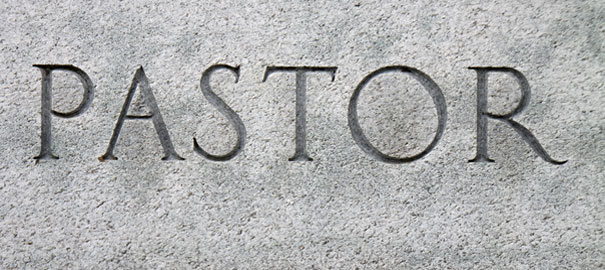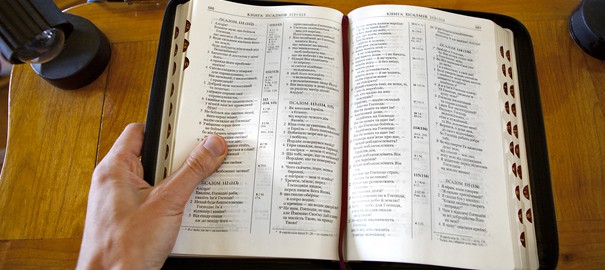Mount Vernon Baptist Church’s history dates back over 145 years. During these years, the church faced many challenges. Individuals emerged to lead the church forward. The church is again at a crossroad in its history. In this case the ministerial leadership of the church is stymieing the growth potential of the church.
The supervision of the church staff is the same in 2006 as it was in 1994 when Mount Vernon had half the number of ministerial staff. All ministerial staff directly report to the senior pastor. Could this philosophy of leadership be the reason the staff is in turmoil and the church is experiencing two years of decline in attendance after twenty years of growth? Does staff organization need to be restructured? Is it time for Mount Vernon to add an Executive Pastor to its staff? A history of the church will help the reader understand Mount Vernon’s evolution to its present leadership style.
The Church That Almost Wasn’t (1860-1941)
Mount Vernon Baptist Church was founded in 1860 in a brush arbor west of Richmond, Virginia in a rural area of Henrico County. Not much is known of the early days; however, in 1878, the local Dover Baptist Association took the fledgling church under its wings to guide and give it strength. Within eight years, the leadership of the church and the Dover Baptist Association were at odds.
Lack of cooperation and growth prompted the Dover Association Executive body to advise the disbanding of the church and recommended that its membership unite with some of the neighboring churches. Apparently this met with little favor from Mount Vernon members for the Association minutes of the next year, 1887, show that the committee appointed to see them was refused a hearing. There is no written record of the church for the next seven years and indeed it seems to have disbanded completely. On July 28, 1894 the Baptists living in the vicinity of the Old Mount Vernon Church were called together for discussing the advisability of reorganizing the church.
The leadership of the Dover Association directed the church to unite with other stronger Baptist churches, but a core of men and women desired a church in their neighborhood. After the church’s reorganization in 1894, by-laws were written and funds were raised to build a church building. In an expression of unity, the Dover Association officers were present for the dedication of the new church building in July of 1895. The new structure was destroyed by fire on December 14, 1895.
That did not dampen the hopes of leaders of Mount Vernon. They met in the pastor’s home and with great resolve dedicated themselves to rebuilding. Their dream as fulfilled in May of 1896 when they worshipped for the first time in the rebuilt structure. The church seemed determined to move forward and by 1908 it had 64 members. But once again, the church hit hard times.
Interest seemed to have declined again and by 1913 the group all but disbanded. It is reported that the group voted to disband one Sunday in 1913 but the next Sunday four determined members showed up and pledged themselves to start again. For several years students from the University of Richmond served as supply pastors, often walking from the campus to church.
It is unknown why attendance declined to such a degree that the church voted to disband. Four determined leaders had a vision that Mount Vernon could be the church envisioned from the beginning. From 1929 to 1937, under the leadership of Rev. W. D. Bremner, the church experienced growth. This era of happiness ended when Rev. Bremner and a group of members left to start a new church, Bonnie Brae Church. Lightning struck twice when the next pastor of Mount Vernon, Rev. Jacobson (pastor from 1937 to 1939), also resigned and left with another discontented group of members to start Goodwill Church.
At this time the membership was badly shaken and reduced in numbers. Leaders from various Churches and the Virginia Baptist General Association gently hinted that maybe there was not sufficient interest to maintain a church here. But the leadership was determined that this lighthouse should shine. Prayerfully they were directed to call an interim pastor, Rev. John W. Reams. His kindly spirit, his rich years of experience and his keen vision of the growth of this community did more than could possibly be imagined toward reorganization.
Mount Vernon was a church in shambles. Even the state Baptist organization thought the dream of Mount Vernon Baptist Church should end. It took the leadership of the men and women that remained and the guidance of an older, wiser interim, Rev. Reams, to lay the ground work for the church to move forward. A church that almost wasn’t will become a church with stability.
The Church That Built a Foundation (1941-1957)
Rev. Reams’ years of experience as a pastor brought peace and guidance through his leadership. It was the perfect interim transition to get Mount Vernon on track. The church called Rev. Cecil C. Anderson as pastor and he began his era of leadership the first Sunday in March, 1941.
Rev. Anderson’s first action was to lead the church toward the programming and the polity of Southern Baptists. Sunday School took on an important role to teach adults, youth, and children the lessons of the Bible in a small group environment.
Rev. Anderson initiated the role of the Deacon Board for lay leaders. They became the decision makers and power group standing with Rev. Anderson in guiding the church. The church had a congregational form of governance as major decisions were brought before business meetings, however decisions on what would be brought to the floor needed clearance from the Deacon Board.
The suburbs of Richmond began to move westward toward the direction of Mount Vernon. The sleepy rural area around the church began to feel the affects of the westward sprawl and as the population increased the church experienced growth. The church felt its first firm foundation in leadership and church government with Rev. Anderson. In April of 1957, Rev. Anderson resigned as pastor of Mount Vernon.
The Church That Built Physical Structure (1957-1968)
Mount Vernon called Rev. James D. Newman as its pastor. His first Sunday was in September of 1957. Deacon Board rule continued during the era of Rev. Newman. The church would reap the benefits of the westward move of population around Richmond. Two major housing subdivisions, West End Manor and Traditional Manor, were built. These new homes were filled with young families with children. The rural lifestyle around Mount Vernon achieved suburban status.
For the first time, Mount Vernon became multi-staffed. With so many young families in the area, Rev. Newman encouraged the hiring of a Minister of Education and Music. Rev. Newman led Mount Vernon in an era of construction. In 1963, Mount Vernon built a 500-seat sanctuary with education space in the basement and behind the sanctuary. It wasn’t long before education space ran short and in 1968, Rev. Newman led the church in the construction of a two-story education building attached to the sanctuary building. These two buildings served the needs of the membership until the middle of the 1990’s. With only four acres of land, the old sanctuary, the 1963 sanctuary, and the 1968 education building maximized the property.
Rev. Anderson brought a stable foundation through the leadership’s organizational structure and small group Bible study to Mount Vernon. Rev. Newman brought stability in the physical sense with structures that stood out in the growing community. Similar to Rev. Anderson, Rev. Newman resigned at the height of his ministry. This occurred in November of 1968 just months after the opening of the education building.
The Church That Left Its Baptist Roots (1969-1981)
In 1969, Mount Vernon called Rev. Thomas Funderburke as its next pastor. He was known for his dynamic and spellbinding sermons. He led through a strong and magnetic personality. Unlike Rev. Anderson and Rev. Newman, Rev. Funderburke had little passion for the small group structure found in Sunday School. Leading the worship services and particularly preaching was his strength. During the first eight years of his pastorate at Mount Vernon, he continued with the leadership style of his predecessors of a strong pastor and a strong Deacon Board but with little emphasis on Sunday School.
The demographics around the church were beginning to change. Young families with young children grew into middle age families with teenagers or empty nesters. With fewer children in attendance and a lessened emphasis on Sunday School, overall attendance began to fall.
With this decline, it became a perfect opportunity for the changes Rev. Funderburke desired to make. During 1977, he had the strength and magnetism to disband the Deacon Board and install a church government not often seen in Baptist churches—Elder Rule. The Elder Board was composed of five elders, with Rev. Funderburke as the Chief Elder. The only time the church met in a business meeting was to vote on the annual budget. All decisions came from the Elder Board. Mrs. Jean Grubbs, church secretary for Mount Vernon since 1972, had this to say about Rev. Funderburke’s ability to move the church to Elder Rule:
He (Rev. Funderburke) had so much charisma that people wanted to follow him. He presented ideas in a way that made it hard to turn him down. He came across with the attitude that he knew you were going to do whatever he asked. It was a command more than a request or question. There were enough new people in the church that loved him so much that they would do anything he requested.
Deacons were reinstalled in the form of administrative directors appointed by the Elder Board to lead seven functions of the church (family services, benevolence, finances, education, administration, building/property, and evangelism). Seven deacons and their wives were selected and each couple administered one of the seven areas. All decisions were reported back to the Elder Board.
Another staff member was added at this time with the Elder Board hiring the church’s first Minister of Youth. This was the first ministerial staff member not voted on by the congregation of Mount Vernon. Staff ministers were not seen as leaders in the church, but resource people for the Elder Board and Deacon couples.
Rev. Funderburke had one more major change for the church. Worship services turned toward a Pentecostal bent. Speaking in tongues along with services of healings and casting out demons became routine. But the strong personality of the pastor led to his demise. He became involved in a personal scandal that was initially covered up by his own staff. Rev. Funderburke eventually confessed his sin. But the scandal of the sin and the staff’s cover up divided a church that was already in attendance decline. Rev. Funderburke resigned in 1981. Unlike his two predecessors, he left a church in disarray, searching for leadership.
The Church That Relocated (1981-1997)
The current Senior Pastor, Dr. Donald F. Runion, Jr., visited Mount Vernon in 1981 about becoming the next pastor. At the time of his visit there were only two Elders remaining. They talked with Dr. Runion about becoming the church’s pastor and the third member of the Elders. But the deacon couples had a different viewpoint. They viewed Elder Rule as an incorrect leadership style for Mount Vernon and wanted Dr. Runion to direct the church back to its traditional Baptist roots.
Mount Vernon was a church in decline and a church in controversy. Many members left the church. The demographics around the church had moved from suburban to urban. Commercial properties existed on all sides of the church. The subdivisions that provided growth in the later 50’s and early 60’s were slowly becoming rental properties.
With the church’s attendance in decline and the leadership in controversy, it was another low point in the church’s long history. Even with this as the back drop, Dr. Runion felt God leading him to leave a successful pastorate near Washington, D.C. and accept Mount Vernon’s call to become its next pastor.
Dr. Runion’s first ninety days at Mount Vernon were spent exploring the direction of leadership for the church. Through personal scripture studies, interviews with associational and state Baptist leaders, and interviews with local Baptist pastors, Dr. Runion determined that the best course was to take Mount Vernon back to its traditional Baptist roots. This determination was to the pleasure of the deacon couples and to the displeasure of the eldership. To promote unity with this new beginning, the deacon couples agreed to disband for a different style of deacon ministry. Instead of installing a Deacon Board, as in prior years at Mount Vernon, the church would install the Deacon Family Ministry Plan.
Dr. Runion’s Doctor of Ministry dissertation in 1975 pertained to the development of a deacon ministry. His opening study of Greek forms of the New Testament word for deacon led to the following comments in his dissertation.
The New Testament sheds relatively little light upon the office and function of the deacon. The Greek word for deacon, diakonos, means literally “the waiter at a meal,” or more often simply “servant.” Diakonos, along with its allied forms, diakonia and diakoneo, is part of a constellation of Greek words referring to service.
In the opening of his dissertation he elaborated that the actual word used for deacon means service, not a ruling board. One source quoted by Dr. Runion in his dissertation given as an example of the serving nature instead of ruling nature of deacons was A Church Organized and Functioning.
Just as the office was established to assist the apostles, deacons in Baptist churches today are chosen to assist the pastor in doing his work. They should support his ministry. Deacons are not the rulers of the church. Rather, they are called to minister. Simply stated, the task of the deacon is to assist the pastor to perform the pastoral ministry.
The conclusion drawn by Dr. Runion was deacons were to serve with the pastor and not to be a ruling board directing the business of the church. This mindset of the deacons as a service organization led to the church adopting the Deacon Family Ministry in 1981. In his dissertation the following duties were listed for Deacon Family Ministry.
A family ministry. Each deacon will visit each of the families assigned to him at least three times per year.
A prayer ministry. The deacons have committed themselves to pray daily for those individuals and families submitted through the monthly deacons’ meeting.
A Lord’s Supper ministry. The deacons committed themselves to engage in a program of visitation under the direction of the chairman of the deacons, for the purpose of sharing the Lord’s Supper with shutins.
A doorkeeper program. The deacons adopted a doorkeeper program for participation by the deacons on an optional basis, which provides handyman services for widows and shut-ins.
With the removal of the Elder Board and the initiation of the Deacon Family Ministry, Mount Vernon began its journey back towards traditional Baptist values. These values were completed by installing congregational government through the rewrite of the church’s constitution.
The church constitution also established needed committees (finance, property, personnel, kitchen, education, etc.) to help the staff engage with lay leaders in directing the operations of the church. Committee chairpersons participated on the Church Council along with ministerial staff. The Council met on a monthly basis to ensure that the ministries and programs of Mount Vernon moved in the same direction together and in harmony with each other.
Due to the departure of several families because of Rev. Funderburke’s scandal and those who left because they desired a more charismatic worship experience, 1982 became the lowest attendance for Mount Vernon since the 1950’s. A divided church began to move into the direction of healing. Many young couples joined the church. Even though the church was located in an urban environment, it became a church with a regional attraction.
God placed on Dr. Runion’s heart the vision of moving Mount Vernon to another location. Land locked and nowhere to expand, the church performed a study in 1983 to find new land and relocate the church. In 1984 it was presented for a congregational vote and a majority approved (approximately 55%) the decision. Since the minority group was so large (approximately 45%), Dr. Runion felt a move at this time would not be in the best interest of the church and could cause a major disruption that could divide the church again. By the end of 1984, Mount Vernon had 1,426 resident members. Over the next ten years, the church experienced steady growth in membership.
Mount Vernon’s growth occurred despite its poor facilities. Parking was limited; therefore, many members parked in a commercial parking lot across a busy, six-lane road (Broad Street Road). Many members began their Sunday mornings by dodging traffic to get to church. Forty percent of the Sunday School population (mostly adult and youth) held classes in the original worship center and education building built in the late 1890’s. The wooden facility was not maintained well over the years which led to a musty smell.
Attempts were made to build by purchasing other commercial land around the church. No one would sell. An architect was hired to redesign buildings on the current site to make better use of the land, but those drawings were never built. At least for a few more years, Mount Vernon would call Broad Street Road its home.
By 1989, with the increase respect for Dr. Runion within the church, it became clear that the church was a staff-led church. Four ministers were on staff with all associates reporting to the Senior Pastor.
Once again in 1994 Dr. Runion sensed the need for the church to move to a new location and another study was performed. The study showed that most of the church’s membership now lived in the northwest corridor of Richmond in a direction away from the church. The membership was challenged to embrace the dream to relocate the church. A vote was taken and this time 95% of those attending on that Sunday morning in 1994 agreed to buy land and move. Five separate, yet contiguous pieces of land were purchased to make up 45 acres for the new facilities.
The local county made a sound financial proposal to Mount Vernon to buy its old facilities and turn it into a middle school for special needs children. The drawback was that the county needed the facilities immediately to renovate and prepare for the new school year. Mount Vernon agreed and was able to use one of the local high schools while their new facilities were being built. In May of 1995, Mount Vernon became a church living out of boxes. At Hermitage High School, each Sunday and Wednesday church members and staff would unpack and then repack all the supplies and equipment for worship and Bible study.
During this time, Mount Vernon left behind some of its traditional features of worship. Because of the need to move as little as possible, the choir no longer used robes and a projection screen was used for Scripture reading and music. Hymn books were left packed away. Letting go of some of the traditional features provided a transition for how worship would be performed in the new facility.
The Church That Grew (1997-2004)
In May of 1997, the vision God gave Dr. Runion in 1983 would come to fruition. The first facility, an 800-seat multipurpose room with education space, was completed on the new site and Mount Vernon found its home seven miles northwest of its original site. When the church opened its doors, the ministerial staff consisted of five ministers, all directly reporting to the Senior Pastor.
1997 began a seven-year span of remarkable growth for Mount Vernon. Average worship attendance rose from 749 in 1997 to 1,221 in 2004. Mount Vernon was the only large church in an ever-changing, constantly growing community. With a location less than a mile off of Interstate 295, the church took on a strong regional appeal. Growth seemed limitless as friends invited friends.
During this period, Dr. Runion and the Minister of Administration led in opening a morning preschool program called the Child Enrichment Center (CEC). With a community filled with young couples, it became instantly popular. Many new members to Mount Vernon had their first encounter with the church through registering their children at the CEC.
Another unexpected but remarkable tool for reaching the community was the creation of Mount Vernon Memorial Park, located on the back ten acres of the property. This was a full-service cemetery that included a mausoleum with a chapel. Mount Vernon found that it was a way to help not only its members, but non-members living in the surrounding community that were seeking help in their time of sorrow. Family members from those buried in the Memorial Park found their spiritual home with the fellowship of Mount Vernon.
In 2001, a second construction project was completed. A drastically-needed 32,000 square foot education building was opened and, within a year, the space was filled. Like the worship attendance, the Sunday morning Bible study attendance also rose at a great rate between 1997 and 2004.
In 2002, the church took another step in increasing its outreach. Mount Vernon added its first contemporary worship service. At the time there were three services: at 8:30 am, 9:45 am, and 11:00 am, all in the blended style of music. 8:30 am was the smallest attended service with an average of only 125. After a six month study, the staff decided that a contemporary service was such a strong desire among the membership that even holding it at the 8:30 am would work. There were no other contemporary services in the immediate area. On the first Sunday, over 300 were in attendance and it grew to an average of 550 within three years before it was determined that the 9:45 am service should also become contemporary.
Growth came easy to Mount Vernon during this period. It was the only large church located in the area with the most programs, ministries, and vast opportunities for young families. By 2004, the peak of attendance at Mount Vernon, the staff had grown to eight ministerial staff members. Six of the seven minister associates reported directly to Dr. Runion.
The Church That Needs a Change (2005-2006)
Dr. Runion’s average work week was between 60 to 65 hours. He was preparing two sermons a week, meeting individually with ministers on a weekly basis, leading weekly staff meetings, leading the Personnel Committee, settling quarrels among support staff and ministerial staff, counseling, performing an average of thirteen weddings a year, performing an average of twenty funerals a year, and trying to find time with his wife, two sons, and his parents who moved into his home because of their failing health.
Mount Vernon’s ministerial leadership showed the signs of strain, but it took the first attendance decline in worship in 24 years to create a search as to the reason for the decline. Projected attendance in 2006 only verified that there were problems that needed to be resolved.
Dr. Runion commented in an interview that there were three issues that created the decline.
There are three issues at Mount Vernon that are of equal importance that have created the situation we find ourselves. The first is a staff leadership issue. The church has become such a strong staff dominate church that we are lacking a strong lay leadership base. The second issue is tied to the first. Because there is a lack of strong lay leadership, our ministers have rid themselves of a feedback system from the membership. The third issue is that we need to build more space.
Mount Vernon staff had slowly removed committees from the church’s governing structure throughout the years. At one point in the early 90’s, there were twelve elected committees to advise as needed and minister together with the staff. By 2005 there were only four elected committees remaining. Dr. Runion was the staff liaison for the Personnel Committee and the Minister of Administration was the staff liaison for the Stewardship, Memorial Park, and Child Enrichment Center Committees. No other staff member worked with an elected committee. Dr. Runion’s assessment of the staff situation was further defined as the interview with him continued.
I thought the staff would see how I empowered members in the church and would follow my example. Instead they created their own little kingdoms and became ‘czars’ and ‘czarinas.’ Our lay people were not feeling empowered by our staff, but feeling used. Members were not working alongside staff, but for the staff. I was not able to tutor the staff correctly in working with our people.
Early in 2005, Dr. Runion experimented with a new staff alignment. His hope was to have fewer direct reports to himself and to have more time to concentrate on the vision for the church.
This current organization structure broke down after four months because of two reasons. The Minister of Administration met only with the Senior Pastor and was uncomfortable not being a part of senior staff meetings including the Minister of Music, Discipleship, Pastoral Care, and Senior Pastor. The Minister of Discipleship had severe personality clashes with the Ministers of Students and Children. Within a few months unhappiness was dominant concerning the new alignment. Even though Dr. Runion’s thoughts on staff alignment were heading in the right direction, it was not the answer to the problem.
Eventually this organizational structure was eliminated and all ministers once again became direct reports to the Senior Pastor. Dr. Runion now had seven direct reports.
The process of increased lay leadership in the church began in January of 2006. Dr. Runion realized he needed to press the issue of building the core of lay leaders so that his ministerial staff could find themselves back in touch with the dreams of the membership. The process began by rewriting the By-Laws of Mount Vernon to require twelve partnership committees made up of six to nine members to work alongside ministerial staff in making decisions of each ministry. These twelve areas were Personnel, Stewardship, Property, Mission, Membership, Adult Discipleship, Ministry, Worship, Students, Younger Children, Older Children, and Deacons.
Each elected Partnership Committee has the authorization to form ministry teams to carry out the areas of service involved with their particular ministry. The result has led to 102 lay members working together on partnership committees and over 400 members serving on short and long term ministry teams. The need to empower the laity took a giant step forward.
The problem remained with the structure of ministerial staff and the number of hours Dr. Runion worked on average a week. The Gallup Organization created a profile test to determine an individual’s strengths. This test entitled Strengths Finder reveals the top five strengths of individuals out of 34 different categories. Dr. Runion’s top five are: Strategic, Learner, Achiever, Input, and Ideation. Scoring high on “Achiever” explains Dr. Runion’s ability to handle such a high work load for so long. A quick description of the “Achiever” will explain.
Achiever describes a constant need for achievement. You feel as if every day starts at zero. By the end of the day you must achieve something tangible in order to feel good about yourself. And by “every day” you mean every single day—workdays, weekends, vacations. No matter how much you may feel you deserve a day of rest, if the day passes without some forms of achievement, no matter how small, you will feel dissatisfied. You have an internal fire burning inside you. It pushes you to do more, to achieve more. After each accomplishment is reached, the fire dwindles for a moment, but very soon it rekindles itself, forcing you toward the next accomplishment. Your relentless need for achievement might not be logical. It might not even be focused. But it will always be with you. As an Achiever you must learn to live with this whisper of discontent. It does have its benefits. It brings you the energy you need to work long hours without burning out.
Even though one of Dr. Runion’s strengths is “Achiever” and he can handle long hours of work, he found out that his body could not take the number of hours he was working. He has not reached “burn out” but has found himself moving close to that point.
The honest reflection of his workload also led to thoughts about his capabilities of managing the church staff. In a later interview Dr. Runion had these thoughts.
I am not a good manager of the staff. I now believe the biggest reason for our decline in attendance is our own staff. We need to be restructured so staff can be better managed and can work together as a team.
The Church Staff That Needs to Evolve
The installation of partnership committees at Mount Vernon has ignited an enthusiasm among the membership that has not been seen in a few years. Members feel as if they are being heard once again and that their leadership abilities are making an impact.
But how will the staff change? Dr. Runion has come to the point that he recognizes that he needs to let go of the management of the staff. He is also very tired and coming close to the point of burnout and realizes that he is also blocking growth due to his staff management style. Is this the time for an Executive Pastor? Will he come from the ranks of the current staff or need to be hired from the outside? Is there another structure of staff supervision that should be employed at Mount Vernon?
View the charts in the original PDF: 2006 Mt Vernon










